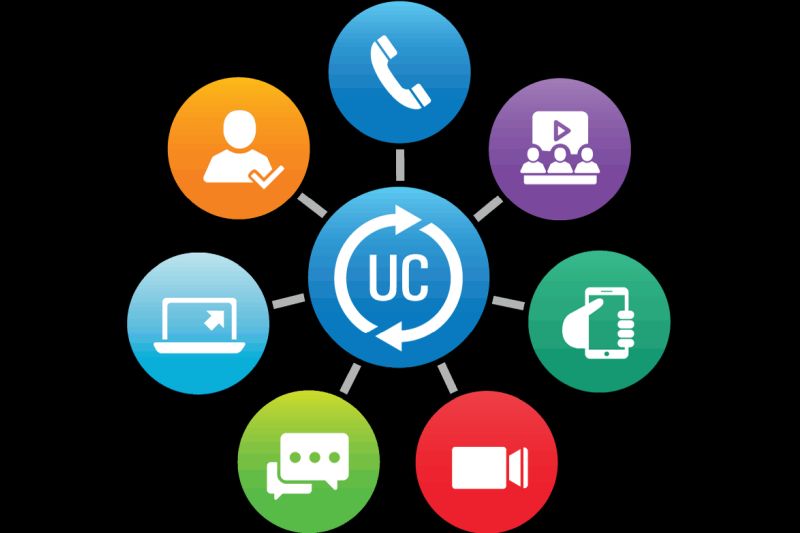Unified Communications as a Service (UCaaS) offers businesses the modern communications they need across multiple channels (voice, chat, video, etc.). Here are the top five trends that will emerge in the UCaaS market in 2024.
UCaaS is a term that refers to an integrated set of communications technologies that includes traditional office telephony—routing, holding, and transferring calls—along with modern tools such as email, instant messaging, video calling, and even AI-powered automation. All of these features are combined into one cloud-based application, so businesses don’t have to juggle multiple apps and/or services. UCaaS tools are essential for modern businesses because they make communication easier and more efficient.
Below is a brief discussion of some of the key UCaaS trends expected in 2024.
1. Generative AI is not standing still.
When generative AI (GenAI) first emerged, the focus was on how well the technology understood natural language and how human-like the generated text responses, images, music, etc. looked. In 2023, GenAI began to be used to solve “helper” problems, such as streamlining synthetic content creation and/or removing some of the “heavy lifting” from time-consuming knowledge-based processes such as writing emails, summarizing transcripts, etc.
At this point, most major UCaaS providers have already launched some type of AI assistant. Thus, in 2024 we will likely see improvements in these tools, as well as many hypotheses being put forward (e.g. by vendors, analysts, consultants) regarding how effectively these tools help knowledge workers, contact center agents, executives/managers contact centers and business leaders to become more productive or effective in their roles. It is important to pay attention to how these statements will be substantiated.
2. Integration of CCaaS functionality
According to Brent Kelly, principal unified communications and collaboration analyst in Omdia’s Digital Workplace group, the practice of purchasing a PBX plus contact center combination existed for years before the advent of UCaaS and contact center as a service (CCaaS). At the same time, from 60 to 80% of contact centers were purchased from the same supplier as the PBX.
Today this preference continues. According to Omdia’s October 2023 end-user survey, 64% of those who had already purchased CCaaS indicated their preference for purchasing CCaaS from their UCaaS provider—this is similar to the pre-UCaaS/CCaaS trend that Kelly talks about.
The analyst also argues that buying UCaaS plus CCaaS is preferred most likely because organizations believe that having a single core platform for all internal and external customer experience (CX) needs will help make IT operations more efficient and simplify collaboration. This single, unified platform can also help drive the next trend that the market is likely to see in 2024.
3. Connect to internal knowledge workers
According to Mila D’Antonio, Principal Analyst on Omdia’s Customer Experience team, the primary customer service model in the coming years will be to connect the customer and agent more quickly/directly with an internal employee who is knowledgeable and available to answer service/support questions. especially as (generative) AI technologies evolve and AI is implemented in contact centers. She argues that this shift is happening due to the rise of remote work, an increased focus on customer satisfaction and a desire to improve contact center efficiency.
This trend is related to the previous one, as the vast majority of (generative) AI solutions for UCaaS and CCaaS are only available through the cloud.
4. Further transition to the cloud
According to an Omdia survey, 80% of respondents have a PBX, which by definition is on-premises telecommunications equipment (i.e., it is a company’s “phone system”). These respondents intend to keep their on-premise PBXs for the time being, but Kelly says they also indicated they intend to migrate some users to cloud services.
Thus, the analyst concluded that while there are still many signs of life in the PBX market, vendors are encouraging their customers to adopt UCaaS solutions for two main reasons:
- In the long term, vendors will receive more income than by selling perpetual licenses for local systems. An increase in annual recurring revenue (ARR) can help in valuing a company’s stock.
- Innovation in the cloud is easier and allows the vendor to add new features that can be immediately available to all users (or added to a higher price tier, etc.). One example of such innovation is the integration of generative AI features.
Hybrid/remote/mobile workers also benefit from seamless access to their communication and collaboration tools no matter where they are. These tools are kept up to date and secure by allowing the company’s IT staff to centrally manage cloud data and applications.
In addition, you can easily increase or decrease the number of licenses depending on the needs of your employees. Note that this can also help an organization reduce operating costs if it strictly monitors license usage.
5. Attention to UCaaS security threats
In 2023, the combination of remote work, VoIP and unified communications services has become a prime target for hackers. Of course, we are talking about UCaaS services and applications.
A variety of common attacks on VoIP services are used to compromise corporate communications—high-volume, DDoS, low-packet, etc. Organizations need to be aware of these and other attacks and do their due diligence to ensure their UCaaS provider has protections in place. them. And if the supplier does not have such protection, then the enterprise itself should take the necessary actions to strengthen its protection and mitigate these threats.





